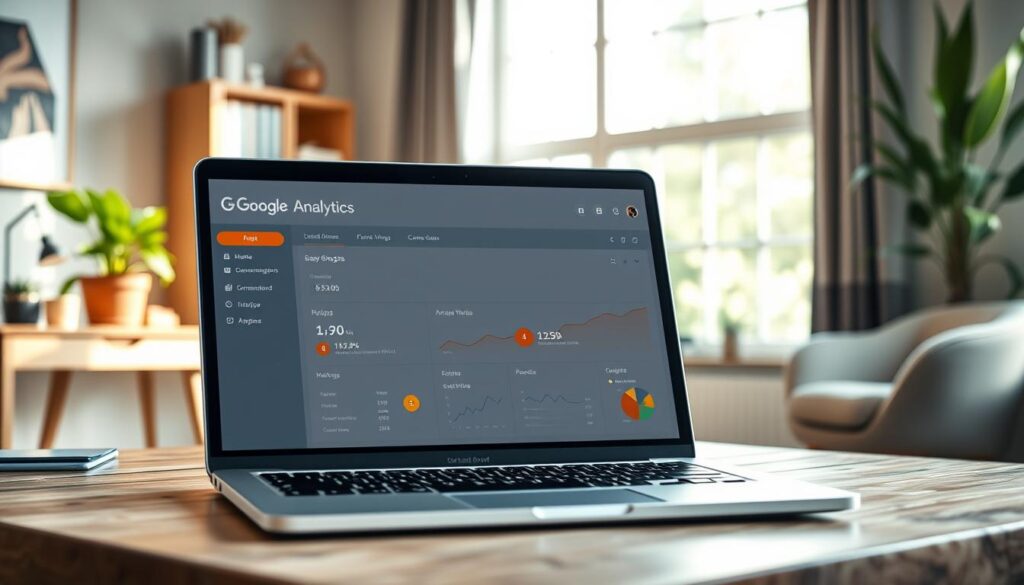As a small business owner, you’re always searching for ways to streamline your marketing efforts and expand your customer base. The right marketing tools can be your secret team. They handle tasks like email automation and SEO optimization.
This lets you concentrate on what’s most important: growing your business. But, with so many tools out there, picking the right ones can feel daunting. In this article, we’ll look at the top content marketing tools to help you reach your business goals.
Introduction to Content Marketing Tools
In today’s digital world, content marketing is essential for small businesses. As a small business owner, you know that creating valuable content is key. It attracts and keeps a specific audience interested.
Why Content Marketing Matters for Small Businesses
Content marketing is a top choice for small businesses because it offers great value. It builds trust and makes your brand a leader in your field. Using content marketing tools makes creating quality content easier.
It also lets you connect with your audience more deeply. This builds a loyal community around your brand. It boosts loyalty and encourages people to talk about your brand, growing your reach.
Overview of Essential Features to Look For
When picking content marketing software or content marketing platforms, look for important features. First, find tools that make creating and editing content easy. Also, choose platforms with strong analytics to track your content’s success.
Other key features include scheduling and publishing tools, SEO help, and integration with other marketing tools. A content marketing platform that offers these can greatly improve your content’s impact and help your business grow.
HubSpot: An All-in-One Marketing Solution
Looking for a marketing solution that does it all? HubSpot is perfect for your small business. It offers a wide range of tools to manage contacts, track interactions, and automate marketing. This makes it one of the best content marketing tools out there.
Key Features of HubSpot
HubSpot’s free CRM keeps your contacts organized and tracks interactions. It works well with your email and website tools. As your business grows, HubSpot grows with you, providing strong marketing automation features.
Benefits for Small Businesses
Small businesses using HubSpot get many benefits. They improve contact management, enhance marketing automation, and gain better insights into customer interactions. This helps you make smart decisions and adjust your marketing strategy to get the most out of your efforts.
With HubSpot, you’re not just getting a tool. You’re getting a partner that helps your business grow through effective marketing strategies.
Canva: Elevate Your Visual Content
Canva makes creating engaging visual content easy for your marketing campaigns. It has a user-friendly interface and lots of features. You can make high-quality graphics without needing to be a design expert.
Designing Engaging Graphics Easily
Canva is great because it makes designing graphics simple. You can pick from many templates, fonts, and images. This helps you create content that looks good.
- Drag-and-Drop Interface: Easily add elements to your design with Canva’s intuitive drag-and-drop feature.
- Customizable Templates: Tailor templates to fit your brand’s style and messaging.
- Extensive Asset Library: Access millions of free images, fonts, and graphics to enhance your designs.

Using Templates for Consistency
Keeping your brand consistent is important. Canva’s templates help you do this. You can:
- Create brand kits that include your logo, color palette, and fonts.
- Use pre-designed templates for social media posts, ads, and other marketing materials.
- Customize templates to ensure they align with your brand’s visual identity.
Using Canva, you can improve your visual content. This will make a strong impression on your audience.
Buffer: Schedule Your Social Media Content
Buffer is a powerful tool for managing your social media. It lets you schedule posts in advance. This saves you time and keeps your social media consistent.
Streamlining Your Social Strategy
Buffer lets you manage many social media accounts from one place. This centralized management system makes scheduling and tracking easier. You can also plan your content with Buffer’s content calendar.
Analyzing Engagement Metrics
Buffer gives you detailed analytics to see how your content does. You can track engagement metrics like likes and comments. This helps you make your content better for your audience.
Buffer also lets you compare different content types. This helps you optimize your social media strategy over time. With this data, you can make sure your content marketing works well for your business.
SEMrush: Enhance Your SEO Strategy
SEMrush can boost your SEO game. It’s a powerful tool for SEO and content marketing. It helps you find keywords, track competitors, check your site, and improve your content. This way, you can grow your website traffic easily.
Simplifying Keyword Research
SEMrush makes finding keywords easy. It helps you find the right keywords and phrases for your site. With SEMrush, you can find new keywords and improve your content to rank better in search results.
SEMrush’s keyword tool has cool features like:
- Keyword suggestions based on your content
- Checking what your competitors are doing
- Technical SEO audits to find ways to get better
Tracking Competitor Performance
SEMrush also lets you see how your competitors are doing. This gives you insights into their SEO plans. By looking at what your competitors do well and not so well, you can change your SEO strategy to outdo them.
Using SEMrush to watch your competitors has many benefits like:
- Finding areas where you can improve your SEO
- Discovering new ways to get links
- Keeping up with the latest trends in your industry
Mailchimp: Effective Email Marketing Solutions
Mailchimp helps you create email campaigns that connect with your audience and get results. It’s a full platform for small businesses to shine in email marketing.
Mailchimp’s easy-to-use interface lets you send out newsletters and automated messages. You can pick from many templates to make your emails look great and match your brand.
Creating Email Campaigns with Ease
Mailchimp is known for making email campaigns simple. You can pick from templates or create your own message. Its drag-and-drop editor makes adding content, images, and links easy.
Key benefits of using Mailchimp for email campaigns include:
- Customizable templates to match your brand
- Drag-and-drop editor for easy content creation
- Personalization options to address subscribers by name
- A/B testing to optimize your campaigns
A Mailchimp user said, “Email marketing is not just about sending emails; it’s about creating a conversation with your audience.” Mailchimp gives you the tools to make engaging emails.
Analyzing Campaign Performance
Knowing how your email campaigns do is key to getting better. Mailchimp has analytics to show you open rates, click-through rates, and more. This info helps you see what’s working and what’s not.
Mailchimp’s analytics features enable you to:
- Track the success of your email campaigns
- Segment your audience based on engagement
- Compare the performance of different campaigns
With Mailchimp, you can boost your content marketing for small businesses. It’s great for nurturing leads, promoting products, or keeping in touch with your audience. Mailchimp gives you the tools and insights to succeed.
BuzzSumo: Discover Trending Content
BuzzSumo is changing how small businesses do content marketing. It shows what’s hot right now. You can see what content is getting shared a lot, helping you know what your audience likes.
Identifying Influencers in Your Niche
BuzzSumo is great at finding influencers in your field. It looks at who’s sharing trending content. This way, you can find people to work with to grow your brand.
Influencer identification is key. It lets you connect with people who already care about what you do. This can make your online presence stronger and your partnerships more effective.
Generating Content Ideas from Trends
BuzzSumo also helps you come up with content ideas. It shows you what’s popular, so you can make content that people will find interesting.
- Look at the top content in your area to find patterns and themes.
- Use what you learn to make new, engaging content that your audience will love.
- Change your content plan to keep up with the latest trends and stay ahead of others.
Using BuzzSumo can make your content marketing better. It helps you stay on top of trends and what your audience wants.
CoSchedule: Content Planning and Optimization
Effective content marketing needs careful planning. That’s where CoSchedule comes in. It helps you organize your content marketing efforts. This makes it easier to manage and optimize your strategy across different channels.
Cohesive Editorial Calendar Management
CoSchedule is great for managing your editorial calendar in one spot. You can plan, schedule, and publish your content on various platforms without switching tools.
With CoSchedule, you can see your content pipeline clearly. This makes it easier to spot gaps in your content strategy and plan better. This approach ensures your content is consistent and meets your marketing goals.
Boosting Team Collaboration
CoSchedule also makes team collaboration easier. It lets multiple stakeholders contribute to content planning. You can assign tasks, track progress, and make sure everyone knows the content strategy and deadlines.
This teamwork environment cuts down on misunderstandings and miscommunications. Using CoSchedule, your team can work together more effectively towards your content marketing goals.
Google Analytics: Measure Your Success
Google Analytics is a powerful tool for tracking your website’s performance. It gives you valuable insights into your audience. This helps you make smart decisions about your content marketing strategy.

Tracking Website Performance Metrics
With Google Analytics, you can track important website performance metrics. These include page views, bounce rates, and average session duration. This data shows how visitors interact with your site and where you can improve.
For example, if a page has a high bounce rate, you can make it more engaging. This could involve adding more content or improving the layout.
Some key metrics to track include:
- Page views: The number of times a page on your site is viewed.
- Bounce rate: The percentage of visitors who leave your site without taking any further action.
- Average session duration: The amount of time visitors spend on your site.
Understanding Your Audience Better
Google Analytics also gives insights into your audience. This includes demographics, interests, and behaviors. Knowing your audience better helps you create content that resonates with them.
For example, if you find that many of your visitors are interested in a certain topic, you can create more content about it. This can attract even more visitors.
Some key audience insights to explore include:
- Demographics: Age, gender, and location of your audience.
- Interests: Topics and interests that your audience is passionate about.
- Behaviors: How your audience interacts with your site and other online platforms.
By combining website performance metrics and audience insights, you can understand your content marketing efforts better. This helps you make data-driven decisions to improve your strategy.
Conclusion: Choosing the Right Tools for You
You don’t need a dozen tools to market well; just the right ones. With many tools out there, it’s easy to get overwhelmed. You might sign up for too many, ending up with a tech stack you hardly use.
Assessing Your Needs
To avoid this, think about what your business needs. Look at your content marketing strategies and find tools that match your goals. This way, you’ll make smart choices that help your small business grow.
Streamlining Your Tech Stack
It’s key to integrate marketing tools for better efficiency. Choose tools that work well together. This makes your workflow smoother, cuts down on manual work, and boosts your content marketing.
By picking the right tools and integrating them well, you can improve your content marketing. Take time to figure out what you need, pick the best tools, and use them in your workflow. This will help you work more efficiently.